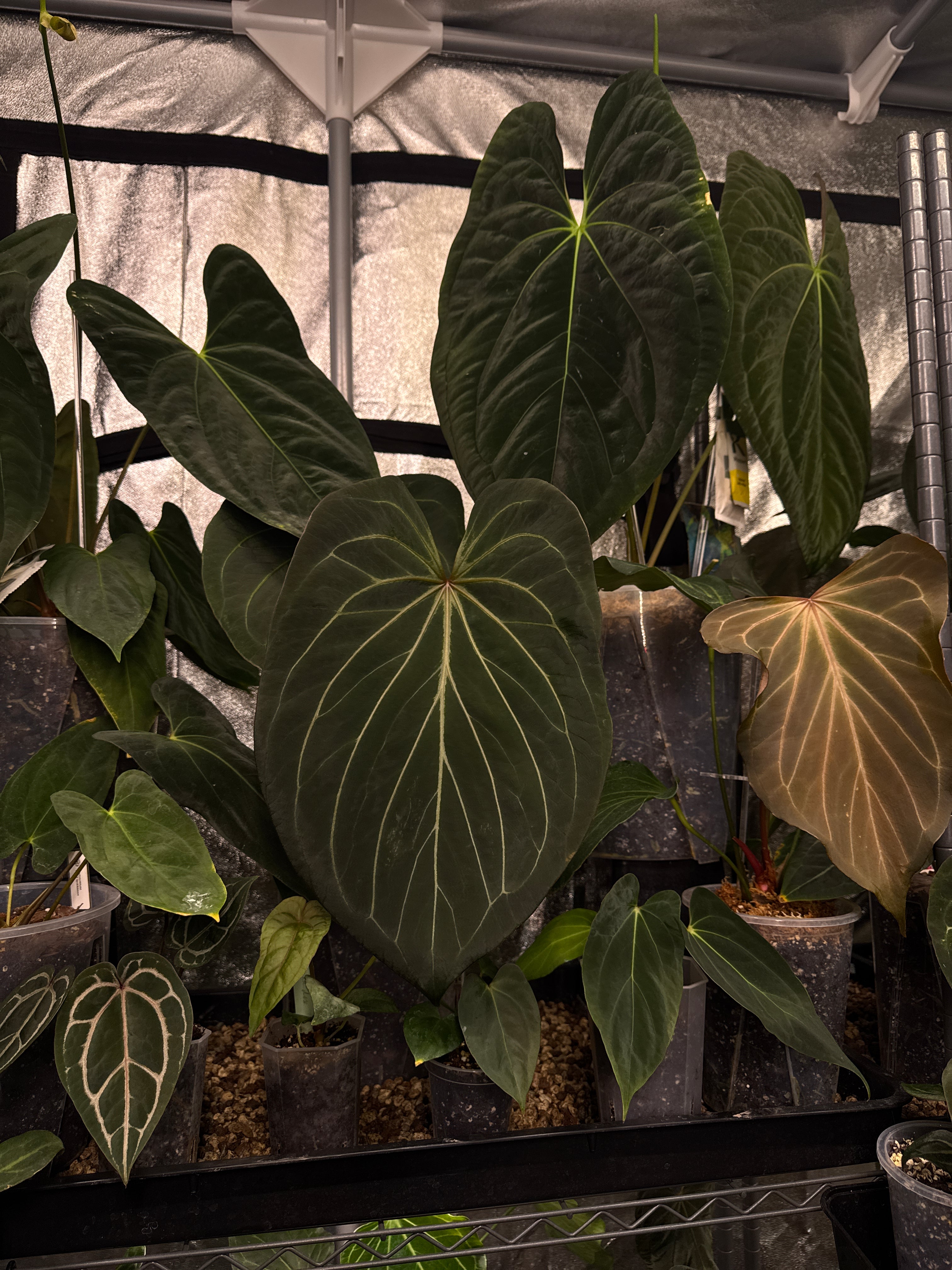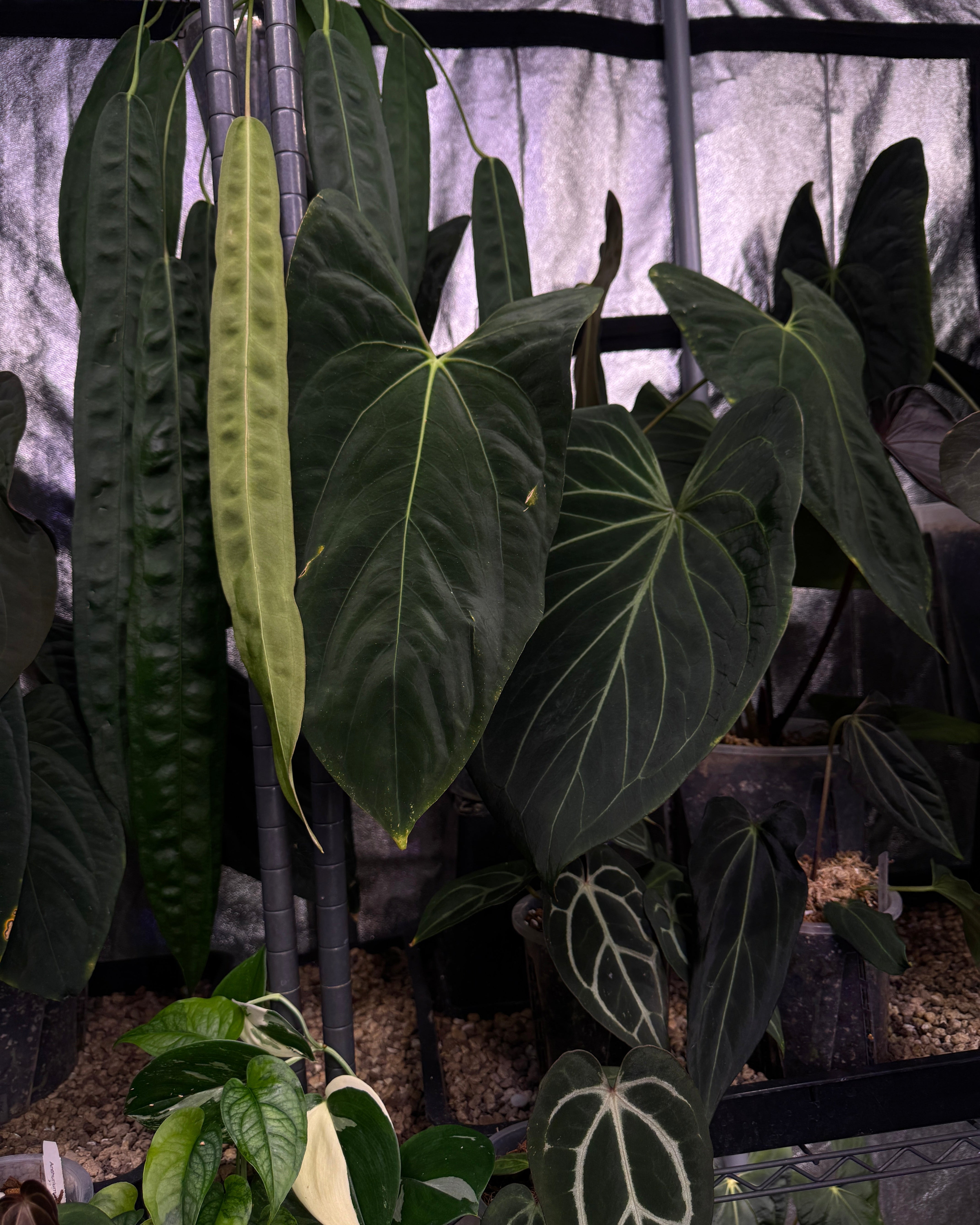
Introduction
Anthuriums are captivating plants, especially the velvet-leaved varieties with their dramatic foliage and jungle charm. If you’re new to them, the good news is: they’re not as intimidating as they look. This guide shares the core principles behind keeping Anthuriums happy, focusing on the environmental conditions and habits that matter most.
Looking for more specific care instructions based on your plant's age or stage?
Check out the Anthurium Care Guide by growth stage (PDF).
Why this guide?
When I first started growing Anthuriums, I was drawn to the incredible variety in their textures, colors, and shapes - and especially to the rewarding process of watching each new leaf emerge bigger, bolder, and more beautiful than the last. But I quickly learned that the care advice out there often left beginners overwhelmed or confused. Over time, I found that what worked best wasn’t a secret formula - it was simply understanding their natural habitat and learning how to recreate that indoors.
This guide is a collection of the basic principles I rely on every day in my own grow space. It’s designed to help you build a solid foundation - whether you’re bringing home your first Anthurium or just looking for a clearer, simpler approach.
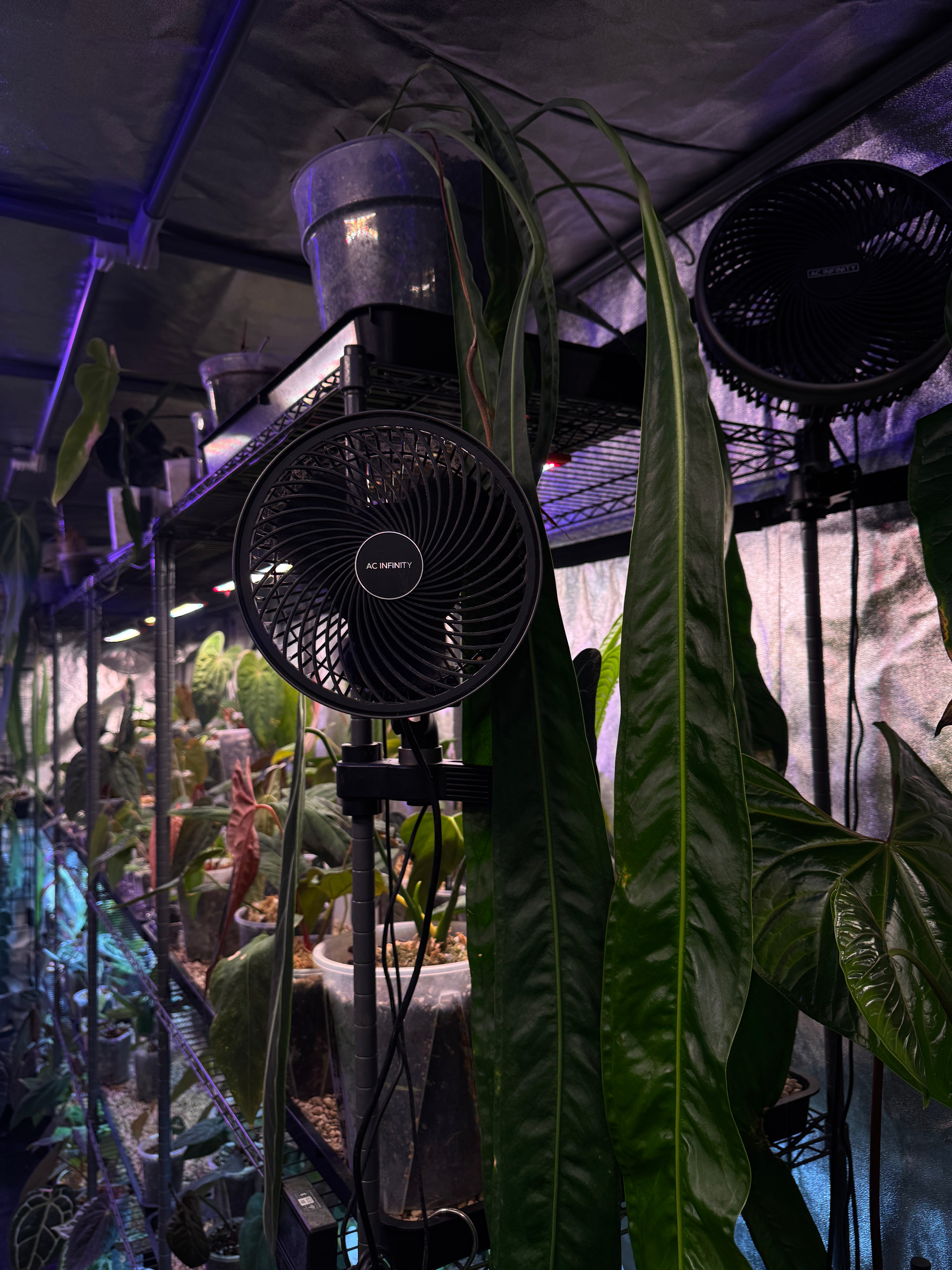
Mimic their natural environment
Anthuriums are native to humid, tropical forests, often growing as epiphytes or semi-epiphytes on trees. Many velvet-leaved species, in particular, originate from Central and South America - especially Panama, Colombia, Ecuador, and Peru - where they grow in cloud forests or mountainous regions with stable humidity and diffused light. But it's important to remember that not all Anthuriums come from exactly the same environment. Some species grow in lower elevations with warmer conditions and higher light, while others thrive in cooler, higher-altitude cloud forests with diffuse light and more stable humidity.
In their natural habitat, many Anthuriums grow in loose, decaying organic material collected on branches or in crevices of trees, rather than true soil. This material is rich in humus and allows excellent drainage while retaining just enough moisture -something to keep in mind when recreating their substrate mix indoors.
This diversity means your care approach might need small adjustments depending on the species you’re growing.
Humidity: Aim for 60–80% for most Anthuriums. Some velvet-leaved species thrive with even more, up to 90–100%. Dry indoor air is their enemy.
Temperature: Keep them between 18–27°C, avoiding sudden drops. They dislike cold air and will struggle if kept below 16°C.
Airflow: Good airflow is essential to prevent stagnant air and fungal issues. Think of a lightly breezy, shaded forest floor - open, fresh, and gently moving air that keeps moisture in balance without feeling stagnant.
Light: Anthuriums enjoy relatively low, indirect light. Too little and they'll grow slowly, forming long petioles and small leaves; too much and you risk leaf burn. Diffused / filtered light is ideal.
VPD (Vapour Pressure Deficit): For growers looking to fine-tune their environment, VPD is a helpful concept. It reflects the relationship between temperature and humidity, indicating how readily a plant can transpire.
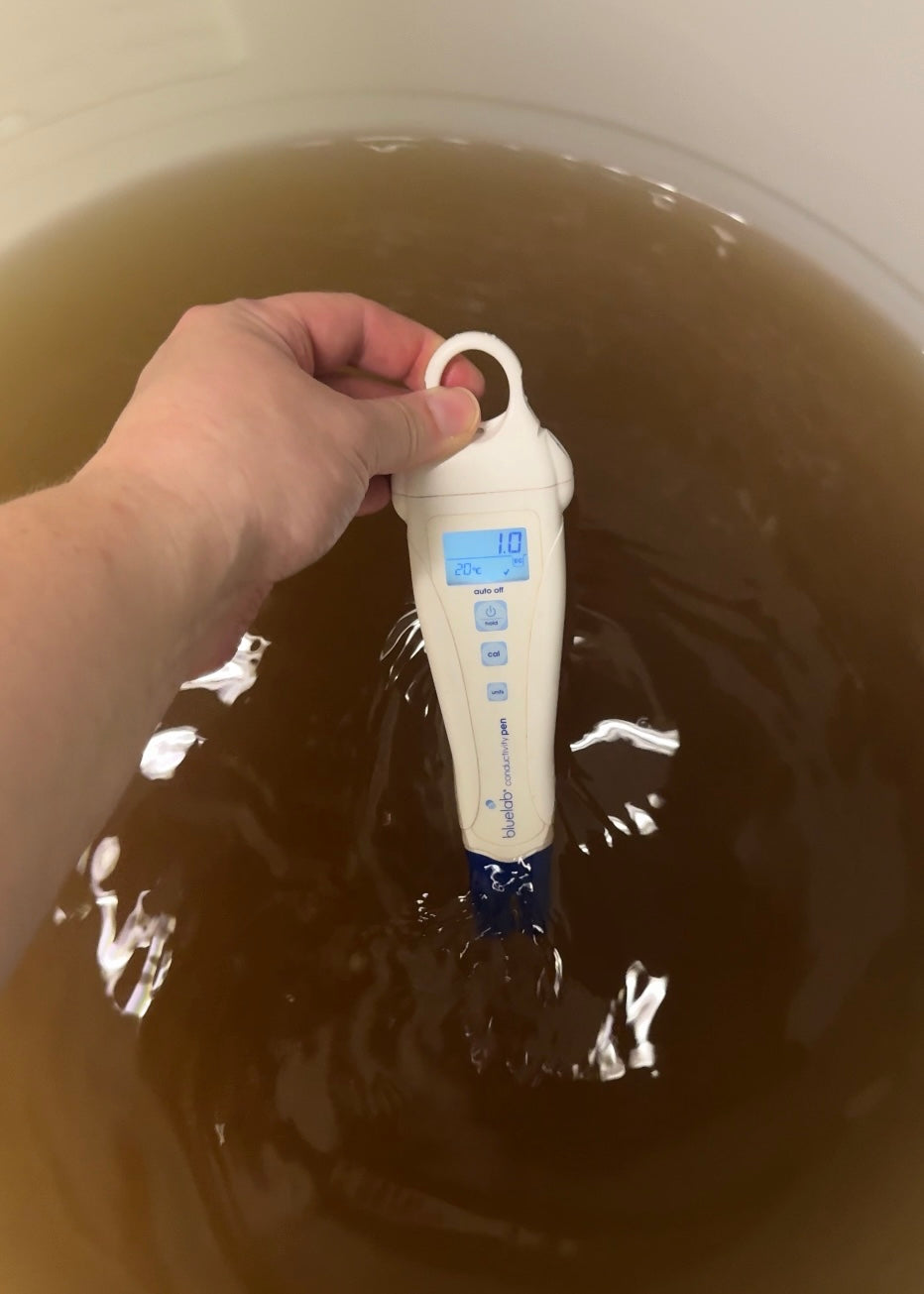
Watering, Feeding & Substrate
One of the most common mistakes with Anthuriums is overwatering. These plants like moisture, but not soggy roots. Getting your watering and feeding routine right can make a big difference - especially when it’s done consistently. Regular, steady habits will support stronger roots and more predictable growth. On the flip side, letting an Anthurium dry out too much between waterings can also cause setbacks - leading to slower growth, root stress, or leaf damage.
Water when needed: Let the top third of the substrate dry before watering. In warm conditions, this might be every few days and up to once a week; in cooler spaces, less often.
Type of water: Filtered or reverse osmosis (RO) water helps avoid salt and mineral buildup that can accumulate in the substrate and damage roots over time. Tap water can work too, especially if it's not too hard - just keep in mind that it already contains minerals, which may build up faster and affect sensitive plants over time.
Feeding: Use a balanced fertilizer with N-P-K and micronutrients. Feed every or every other watering if your growing conditions are ideal and stable all year round. Reduce feeding during cooler months when growth slows.
Substrate: Your substrate is just as important as water and nutrients. Anthurium roots need air as much as they need moisture. A well-draining, structured mix encourages healthy root growth and helps prevent rot.
I recommend trying my chunky aroid mixes that I use on all my plants: These mixes are a blend of tree fern fiber, coconut husk chips, orchid bark, perlite, worm castings, zeolite and horticultural charcoal. This replicates the loose, airy material they grow in naturally.
Pot choice: Use pots with good drainage - clear or slotted pots work well for monitoring root health and moisture levels, and making plant care much easier!
Observe how your plant responds to your routine - every growing environment is a bit different.
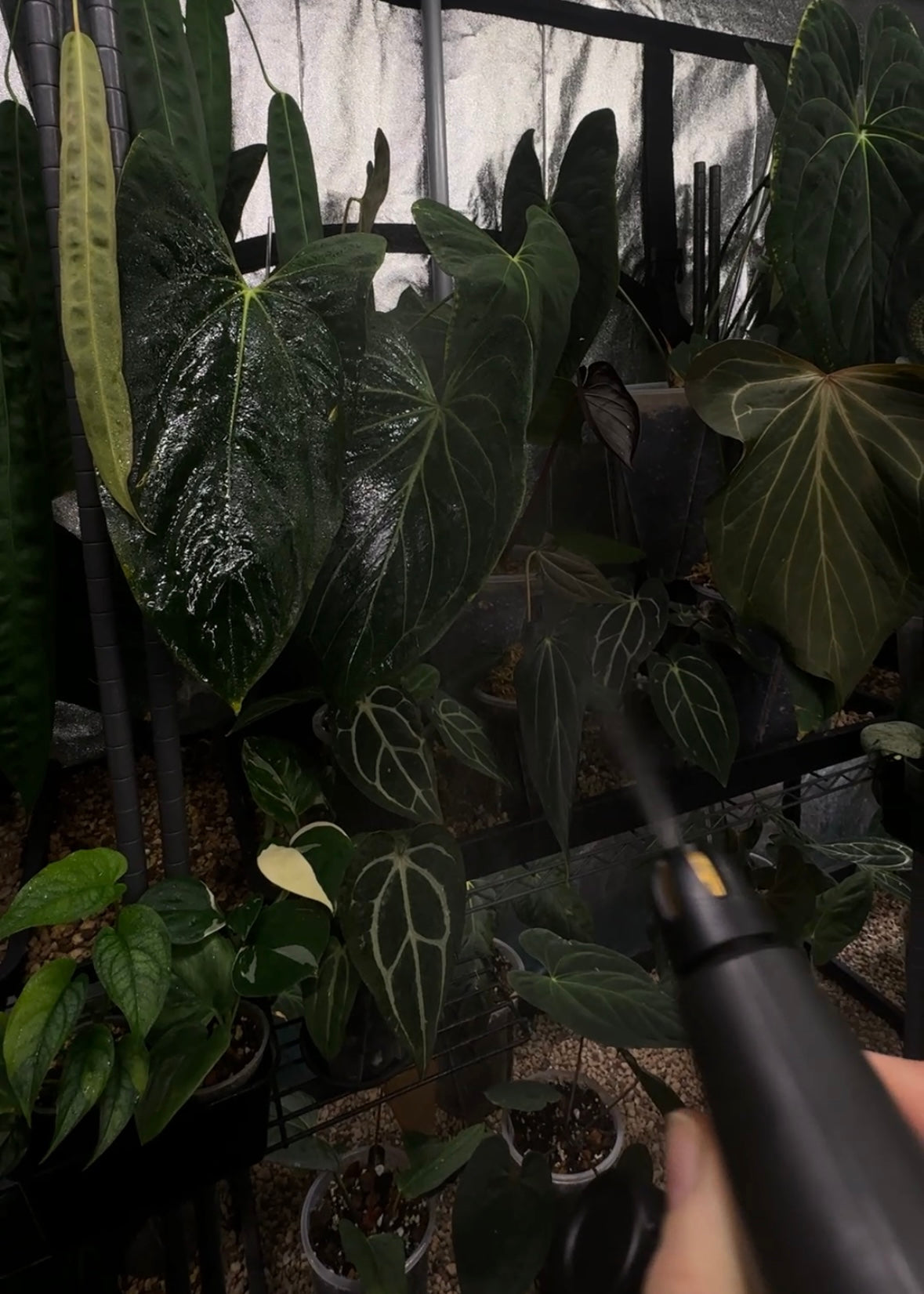
Keep them clean and pest-free
Keeping your Anthuriums clean and free from pests plays a big role in their long-term health. Weak or stressed plants are more likely to be targeted by pests, so supporting your plant’s overall vitality is one of the best preventative strategies. Regular maintenance, proper feeding, and occasional foliar sprays can go a long way toward keeping your plants strong and resilient. Pests are especially active during the warmer months, so be extra watchful in summer when growth is fast and conditions are favorable for infestations.
Clean leaves: Wipe dust from leaves with a damp cloth (or unscented wet baby wipes!) to keep pores clear and reduce pest attraction. You can also use foliar sprays that build an invisible layer on the leaf surface to make it unpleasant for pests in terms of taste or texture.
Inspect regularly: Check for common pests like spider mites, thrips, or mealybugs. Early detection is key.
Prevention: Use foliar sprays if needed or consider introducing beneficial insects to your grow space as a proactive measure. Beneficial mites, for example, can help control unwanted pests like spider mites or thrips without harsh chemicals. They work well in stable, humid environments like those preferred by Anthuriums and can be released directly onto the plants, where they patrol the leaves and substrate in search of pest eggs and larvae. You can also use neem oil or a neem oil and mild soap mix as a natural foliar treatment. For a DIY approach, consider a spray made with minty essential oils (like peppermint or eucalyptus), castile soap, and a small amount of alcohol - just be sure to test on one leaf before widespread use, and very important - have all lights turned off, and let good airflow dry off the leaves. I normally turn the lights back on the following day, so leaves don't risk getting burnt. Do this at your own risk, and do a research first!
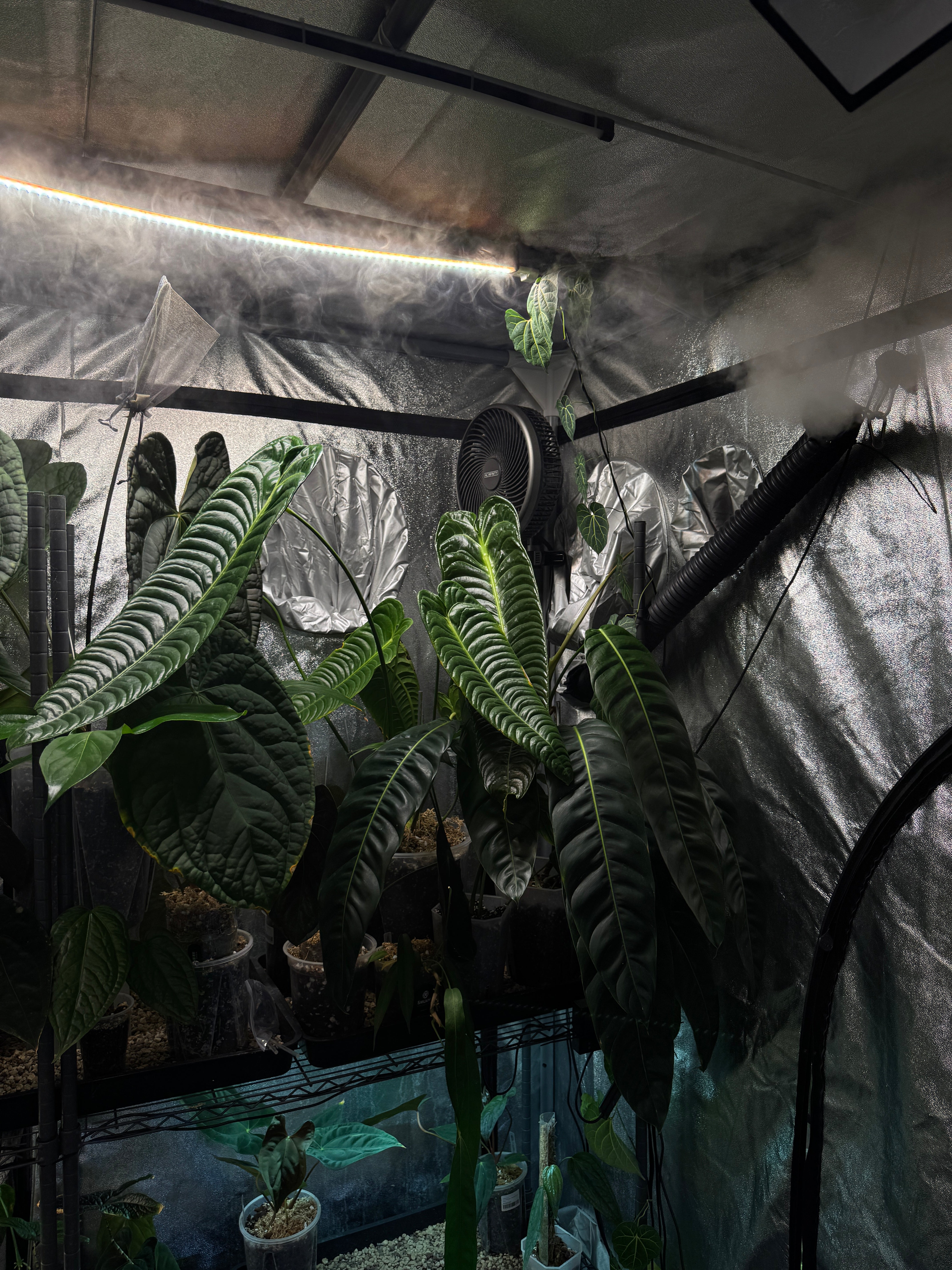
Troubleshooting basics
If your Anthurium is unhappy, it will let you know:
Brown tips: May indicate low humidity, inconsistent watering, or salt buildup.
Yellowing leaves: Often a sign of overwatering or poor drainage. This can also be old leaves simply on their way out.
Mushy stems or wilting: Check for root rot or bacterial issues.
Fungal or bacterial infections: Look for blackened or soft spots on leaves and stems, sudden collapse, or foul smells. These issues often spread quickly and thrive in overly moist, stagnant environments. Improve airflow, reduce excess moisture, and remove affected areas promptly. In some cases, a copper-based fungicide or antibacterial treatment may help.
Don’t panic - most issues are reversible if caught early. Adjust your setup, give it time, and your plant will likely recover.
